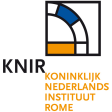Summary
- This study was presented as a master’s dissertation to the Faculty of Humanities and Social Sciences of the New University of Lisbon. Though the initial goal was to produce a carta arqueológica for the municipality of Estremoz, settlement patterns and their evolution in a long duree perspective were also anlyzed, from the Roman period to the modern one, consisting of a timespan roughly between 100 BC and 1800 AD. During this research, over two hundred occurrences were identified and mapped. These include not only archaeological sites but also built heritage, mostly churches and chapels, which, in most cases, are still in use. A throughout description of archaeological survey methodologies is presented in the introductory chapters and it is referred that a complementary approach was used for this study, as both intensive and extensive survey methods were used.
Project Dates
- 2014
Periods
- No period data has been added yet
- 600 BC
- 100 BC
- 1800 AD
- The research area, corresponding to the whole municipality of Estremoz, was previously divided in smaller research sectors, which corresponded to the various parishes that constitute the municipality. Then, topographical and geomorphological aspects were also analysed, as well as the toponymy, which is frequently mentioned during the text. Sites and small, isolated finds were considered for this study. The fieldwork undertaken during this research occurred in two phases. It was intended to use a complementary approach where extensive and intensive survey methodologies would be both utilized. In the first phase, the methodology followed an extensive approach, and only some selected areas were surveyed. These areas were selected based on the previous bibliographical, topographical and toponimical assessment, as well as oral information provided by the local inhabitants. The second phase, an intensive one was applied. When a team was available, the survey was undertaken in transets with field walker spacing raging between 5 and 10 meters. When surveying areas with topographical interest or when remains were identified, the field walker spacing was reduced to 1 or 2 meters. All the sites that were found or relocated were then registered with GPS and mapped on a 1:25000 Carta Militar.
Other Comments
- Director: Maria Rita Xarape Laranjo - Museu Municipal de Estremoz . ............................................................................................................................. This record was produced by the Fasti Online Survey team within the framework of the KNIR student internship 2021 'Digital Field Survey Archaeology'.
- This research aims to produce an inventory of the cultural heritage existing in the Municipality of Estremoz. Chronologically bounded between the Roman period and the Modern age, this study mapped and analysed both archaeological sites and built heritage, such as churches and chapels, some still in use. This study promotes, values and safeguards the heritage of Estremoz. Moreover, the data has been also analysed in order to provide insight into the evolution of the settlement patterns in the area of what is now the Municipality of Estremoz, in a long duree perspective, from the Roman to the modern periods.
Director
-
Director
- Maria Rita Xarape Laranjo - Museu Municipal de Estremoz




![Edit [ed]](/survey/skins/fastisur/images/plusminus/edit.png)
![View [view]](/survey/skins/fastisur/images/plusminus/view.png)